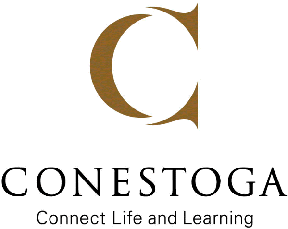
Course Delivery Procedure
- Approver:
- Academic Coordinating Committee
- Policy Owner:
- Vice-President, Academic
- Policy Lead(s):
- Director, Program Planning and Pathways
- Defining policy:
- Effective date:
- 2020-01-13
- Date of last approval:
- 2024-12-18
- Status:
- Approved
Procedure Statement
Conestoga is committed to ensure that course delivery is driven by course outlines, and that students have an opportunity to learn in a supportive environment.
Definitions
Conestoga College maintains a glossary of terms specific to the institution. The terms in use for this document are defined below.
- Academic Manager
- The Executive Dean or Program Chair or designate responsible for the academic management of a particular program or program area.
- Course
- A distinct and discrete teaching and learning framework, containing content approved by an expert source, usually structured to be delivered over an identified period of time, with measurable learning outcomes and formal student evaluation.
- Course Model Shell
- A model course shell in eConestoga, contains course content that is regularly reviewed and maintained by the college. The college typically maintains one model course shell for each delivery mode, length, and version of a course code and faculty are expected to copy the appropriate model shell into their own courses each semester to ensure quality and consistency for all students.
- Course Outline
- An approved document outlining the course and unit learning outcomes, course title, course code, course description, credits, hours, prerequisites, co-requisites, resources, and evaluation methodology and associated grading allocation, for credit courses offered at Conestoga.
- Course Shell
- A course shell is a blank template that can be populated with instructional content, course communications and activities, essential elements and student assignments and feedback within eConestoga. Course shells are assigned to a specific delivery of a course (e.g. COMP1234-15F-Section 1- Computer Software).
- Credit Course
- A distinct and discrete teaching and learning framework containing content that has been approved by an expert source and structured to be delivered over an identified period of time. Credit courses have measurable learning outcomes and formal student evaluation. Student evaluation in a graded credit course is weighted in the calculation of the grade point average.
- Curriculum
- A plan for learning that is coordinated and articulated in a manner designed to result in the achievement by students of specific knowledge and skills and the application of this knowledge. Curriculum refers to the content (the material to be learned), the actions and resources involved in teaching and learning and processes for evaluating the attainment of educational objectives and is driven by learning outcomes.
- eConestoga
- eConestoga is Conestoga’s learning management system (LMS) that serves as a centralized platform for accessing course materials, engaging in activities, submitting assessments, tracking grades, and facilitating communication and collaboration. eConestoga supports accessibility by providing content in digital formats that are consistent with AODA standards.
- Essential Elements
- All courses in full-time programs are to have Essential Elements of information available to learners in eConestoga. Essential Elements are key components provided to all learners across all courses within full-time programs on eConestoga. The Essential Elements document can be accessed under “Faculty Support” in every course shell.
- Essential Employability Skills (EES)
- Essential Employability Skills are non-vocational skills critical for success in the workplace, in day-to-day living, and for lifelong learning that students learn as part of the formal curriculum, and as stipulated by the Ministry.
- Evaluation
- Activities that assess the degree to which students have achieved established learning outcomes. These include, but are not limited to: demonstrations, exams, projects, tests, and quizzes.
- General Education Course
- A course that engages students in learning beyond their vocational field of study. The course will fall into at least one of the following five MCU mandated themes: Arts in Society, Civic Life, Social and Cultural Understanding, Personal Understanding, and Science and Technology.
- Ministry of College and Universities (MCU)
- The Ministry of Colleges and Universities (MCU) has the function of assessing all program proposals for determination of appropriate code classification, funding weights and parameters, and program titling.
- Program/Program of Study
- An academic program that leads to issuance of a post-secondary credential or certificate for a particular area of study.
- Universal Design for Learning
- Universal Design for Learning (UDL) is a framework to guide the design of learning environments. UDL ensures that the learning experience is accessible and challenging for all students.
Responsibilities
Academic Administration
- Update and ensure the communication of college-wide expectations regarding policies, procedures, and practices that impact course delivery.
Academic Manager
- Ensure courses are delivered according to the approved program design for cohort, academic dates and delivery methods.
- In collaboration with Academic Scheduling and Program Planning and Pathways (PPP), implement minor or major course delivery improvements as a result of the Annual Program Review (APR) or Major Program Review (MPR), as required.
- Complete pre-semester processes for course outline and course shell updating, timetable preparation, faculty assignment and ordering of resources according to Conestoga's timelines.
- Communicate to ensure that course material and evaluations are delivered in a consistent manner if sections of the same course are delivered for more than one program or academic school.
- Ensure resources including faculty, support staff and technological infrastructure are confirmed pre-semester.
- Ensure that:
- Past course materials are shared with new teachers as appropriate.
- Course Model Shells are updated in a timely manner each year/term
- Faculty are aware of the expectations regarding Essentials Elements and the requirement to achieve 100% compliance
- Faculty are aware of the requirement to prepare all shared course materials in an accessible format.
- Expectations for alignment with others teaching the same course are made clear.
- Faculty are aware of how their course(s) fit into a program of study.
- Faculty are aware of the Essential Employability Skills (EES) or Degree Learning Standard, as applicable.
- Faculty are aware of the Academic School Handbook and of any program specific regulations (e.g., late assessment penalties, resubmissions, etc.)
Academic Scheduling
- Coordinate, execute, and administer course scheduling and room assignments for delivery of instructional activities into specific teaching spaces for timetabling purposes, in collaboration with Academic Schools, Facilities and Capital Management, and Information Technology Services.
- Manage use of academic space resources in compliance with regulatory standards, including generation of business intelligence utilization reporting.
Program Planning and Pathways
- Ensure that the delivery of a course is supported by a course outline that meets Conestoga's course outline development or review policy and procedures and is present on the Enterprise Resource Planning (ERP).
- Ensure that each course has one course code regardless of delivery type or location.
Faculty
- Teach according to the method delivery assigned by the Academic Manager (e.g., on-campus, hybrid).
- Use the official course outline to guide course delivery and to develop the course evaluation methods to demonstrate student learning.
- Use the official college learning management system (eConestoga) for all course delivery
- Create a semester-specific Instructional Plan for each assigned course.
- Prepare course materials and assessments, as appropriate.
- Provide ongoing access to material beginning from at least three days before it is taught.
- Ensure that all course materials and information remain on course shell following course end date.
- Incorporate the principles of Universal Design for Learning (UDL) into course delivery and assessment design.
- Determine approaches to attendance monitoring in accordance with College policies.
- Reach out to at-risk students to support their success.
- Advise the Academic Manager of any absences, cancelled classes, field trips or classes held in a revised format or location.
Human Resources
- Communicate orientation and training expectations to new full-time and contract faculty hires.
Online Learning Centre (OLC)
- Provide access to a course shell for each course section.
- Provide an access point to the course outline within each course shell.
- Support students and faculty with use of eConestoga technology.
Teaching and Learning
- Support faculty in their teaching and development through provision of mandatory courses, the Conestoga Full-Time Faculty Educator and Leadership Development Program and additional learning, observation and consultation opportunities.
Procedure
- On first hiring, the Academic Manager will:
- Orient new faculty to their course(s), their program(s) and their coordinator.
- Provide faculty with course outline(s), instructional resources and appropriate contacts.
- In the case of multi-section course, ensuring faculty teams collaborate on consistent delivery of course content, as appropriate.
- Ensure the completion of the “College-Wide Onboarding Checklist.”
- Inform the faculty that evaluation methods must align with the course outcomes.
- Prior to the first week of the semester, faculty will:
- Ensure all Essential Elements are included in the college LMS (eConestoga) shell.
- Ensure an up-to-date Instructional Plan based on the Course Outline is posted on college LMS (eConestoga). Faculty have access to a Dynamic Instructional Plan through the college LMS (eConestoga).
- Communicate with other faculty teaching the same course to ensure alignment across sections.
- Obtain course resources.
- During the first week of classes, faculty will:
- Introduce students to the Course Outline, Instructional Plan, materials on eConestoga, classroom procedures and expectations, and required course resources.
- Ensure students are aware of how to communicate with the professor.
- Inform students of the requirements for passing the course and any course-specific regulations (e.g., late assessment penalties, re-write opportunities, expectations regarding professionalism, etc.).
- For each class session, faculty will:
- Upload all available class materials to the appropriate Course Shell on the college LMS (eConestoga) at the start of the semester. In consideration of student accessibility needs, upload all available class materials in an accessible format on college LMS (eConestoga) at least three days before a lesson.
- Devise a lesson plan to support student engagement and learning.
- Use techniques to create a positive and inclusive classroom environment.
- Start each class on time with a framework that outlines lesson outcome(s) and activities.
- Use the full class time allotted.
- Ensure breaks occur during the lesson time to support student needs.
- Draw students’ attention to the place of each lesson in the Instructional Plan and the course outline.
- Include active learning opportunities throughout the lesson.
- Where appropriate, provide opportunities for practice for upcoming assessments.
- Manage the class in a way that ensures an opportunity for learning.
- Provide opportunities for formative feedback and coaching.
- Incorporate instructional technology as appropriate.
- For Asynchronous delivery, faculty will:
- Log in regularly to eConestoga to engage with students
- Use various means to create a sense of community (e.g., announcements, discussions, introduction videos, recap videos, etc.)
- Leverage resources available in eConestoga to support student success (e.g., students at-risk dashboard, student activity, flagged assessments, etc.)
- For each course, faculty will follow the Evaluation of Student Learning Policy and Procedure.
Relevant Legislation and Related Documents
Related documents
Revision Log
| Date | Details |
|---|---|
| 2019-12-18 | Original |
| 2019-12-11 | Academic Forum |
| 2020-01-13 | Academic Coordinating Committee |
| 2021-05-19 | Academic Forum |
| 2021-06-09 | Academic Coordinating Committee |
| 2022-01-12 | Academic Forum |
| 2022-01-19 | Academic Coordinating Committee |
| 2022-05-11 | Academic Forum |
| 2022-05-25 | Academic Coordinating Committee |
| 2022-09-14 | Academic Coordinating Committee |
| 2024-12-11 | Academic Forum |
| 2024-12-18 | Academic Coordinating Committee |
